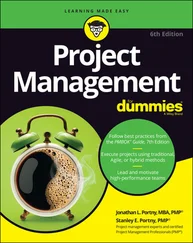 The working relationship between the executive director (if you have one) or founder and the board president is a key factor to having an effective board and organization. Ideally, the relationship between these two leaders is one of respect and trust.
The working relationship between the executive director (if you have one) or founder and the board president is a key factor to having an effective board and organization. Ideally, the relationship between these two leaders is one of respect and trust.
Encouraging commitment from board members
Getting members of a board to pull their weight sometimes seems like a problem that you can’t solve. Not every board member will contribute equally to the work involved in governing a nonprofit organization. If everyone on your board shows up at every meeting, reads all the materials, studies the financial statements, and contributes to fundraising activities, consider yourself fortunate.
Here are some techniques you can use to encourage full board member participation:
Board contracts: Some nonprofits ask new board members to sign an agreement that outlines expectations for board service. The contract may include a commitment to contribute financially to the organization, attend all board meetings, and serve on one or more committees. Although board contracts aren’t legally binding, they provide a clear understanding of responsibilities for each board member. With a board contract, no one can say they didn’t understand what they were getting into when they joined the board.Check out File 3-4 at www.wiley.com/go/nonprofitkitfd6e for a sample board contract.
Bylaws: Organizational bylaws can state the requirements for board participation. For example, a board member may face dismissal from the board after missing three consecutive board meetings.
Job descriptions: Just like employees, board members often perform better when they know exactly what they’re supposed to do. Creating job descriptions for officers, committee chairpersons, and individual board members may clarify responsibilities and make them easier to fulfill. If a member isn’t pulling their weight, a committee chairperson should speak with that person and remind them of their responsibilities.
Reliance on board members: Solicit opinions from members between board meetings. Use their expertise and recognize their contributions.
Self-evaluation: Sometimes, encouraging a board to look at itself motivates board members or encourages those who aren’t pulling their weight to resign.
Board members fail to contribute equally to the work of the board because of time constraints, business travel, and just plain laziness. Cut each member some slack. But if a board member’s lack of participation impacts the full board, the decision is up to the board president (often, in partnership with the executive director) to ask the member to reconsider their commitment to the organization.
 To a great degree, each board member’s work reflects their commitment to the organization’s mission. Board members who truly believe in what you’re doing will do everything they can to help you succeed.
To a great degree, each board member’s work reflects their commitment to the organization’s mission. Board members who truly believe in what you’re doing will do everything they can to help you succeed.
Holding effective board meetings
Most board work is done in meetings, either with the full board or in committees. The board president is responsible for ensuring that meetings are well organized and begin and end at a scheduled hour. We can’t think of anything that damages board effectiveness more than poorly organized meetings that don’t stay on topic and that continue late into the night. Nonprofit board members are volunteers; they aren’t being paid by the hour.
If the organization has an executive director, the president may delegate some responsibilities for setting up meetings. Ultimately, however, part of the president’s job is to see that board members have the information they need to make good decisions and that they do so in a reasonable amount of time.
Getting the members to show up
Stipulating how often a board of directors should meet is impossible. The only real answer is “as often as it needs to.” A meeting schedule depends on the organization’s needs and the amount of business conducted at board meetings. The frequency of meetings should be specified in the bylaws. Most nonprofit boards meet more frequently than once a year; some meet quarterly, some meet every other month, and others schedule monthly meetings. Of course, the board president may call a board meeting at any time if the board needs to handle special business.
The advantage of having more frequent board meetings is that board members are more engaged in the governance of the organization. The disadvantage — especially if the agenda doesn’t include much business — is that board members may be more tempted to skip meetings.
Some boards schedule meetings at the beginning of the year for the entire year. By entering these dates in their appointment calendars months in advance, board members are less likely to schedule other events on the same days and are more likely to attend the meetings. For example, if you meet monthly, you may schedule your meetings for the second Tuesday of each month. If you aren’t this organized, always schedule the next meeting before the end of the present meeting. Doing so is much easier than trying to schedule a meeting by telephone or email.
 Some boards use online collaboration tools to communicate between board meetings and to compile documents in an easily accessible place.
Some boards use online collaboration tools to communicate between board meetings and to compile documents in an easily accessible place.
Conducting efficient meetings
If you’re looking for some tips to ensure effective board meetings, check out the following ideas:
Schedule a meeting between the executive director and board president before the meeting begins. This can be done in person or via phone, but it’s an important step in determining the agenda and the focus of the upcoming meeting. The meeting also allows the executive director to update the president on staff issues, funding opportunities, and any areas where the executive director needs particular guidance and support from the board.
Ten days to two weeks before a board meeting, send an announcement of the meeting to all board members. Include the minutes from the last meeting and an agenda for the upcoming meeting. Also include any committee reports, financial statements, or background research that the board will discuss at the meeting. If the meeting minutes include a list of tasks for board members to complete before the next meeting, try to send members a rough draft of the minutes as soon after the meeting as possible so that they can get started. (File 3-5 at www.wiley.com/go/nonprofitkitfd6e contains an outline of meeting minutes that the board secretary can fill in during the meeting.)
Limit the length of meetings to two hours or less, if possible. After two hours, especially if you’re holding the meeting in the evening, attention begins to wane. If you must go longer than two hours, take a break. Offering refreshments is always a good idea.
Try to find a conference room for the meeting. Holding a discussion around a conference table is much easier than sitting in someone’s living room. The table offers a place to set papers, and people won’t argue over who gets the recliner. It also sets the stage and implies that work is to be done. Avoid holding meetings in restaurants and cafes, if possible. The noise levels are too high to make good discussion possible, and all the activity is a constant distraction. You also have no privacy. Believe us — we’ve tried it!
Читать дальше

 The working relationship between the executive director (if you have one) or founder and the board president is a key factor to having an effective board and organization. Ideally, the relationship between these two leaders is one of respect and trust.
The working relationship between the executive director (if you have one) or founder and the board president is a key factor to having an effective board and organization. Ideally, the relationship between these two leaders is one of respect and trust. Some boards use online collaboration tools to communicate between board meetings and to compile documents in an easily accessible place.
Some boards use online collaboration tools to communicate between board meetings and to compile documents in an easily accessible place.










